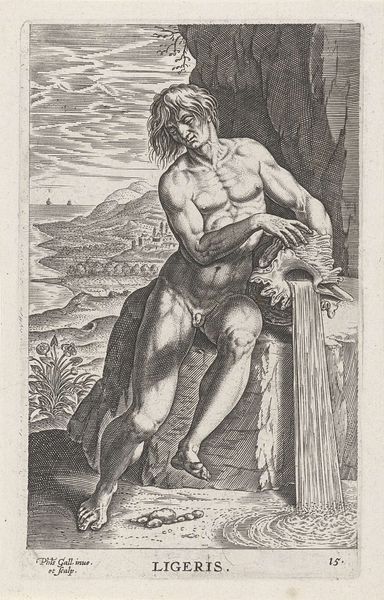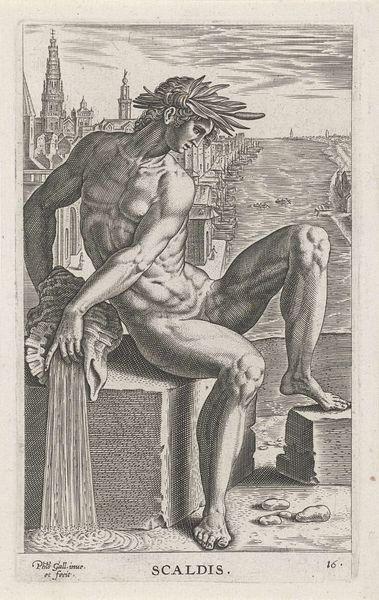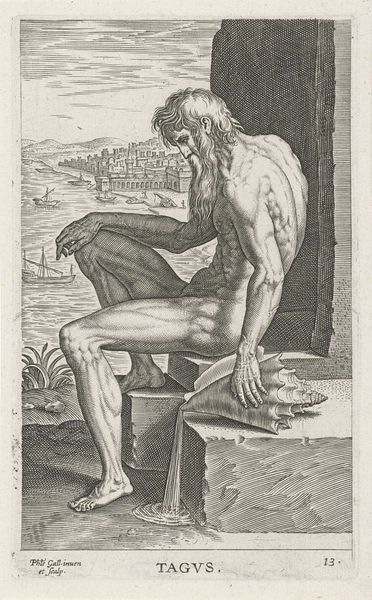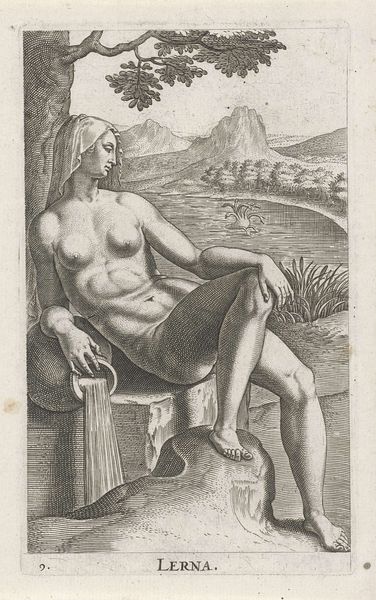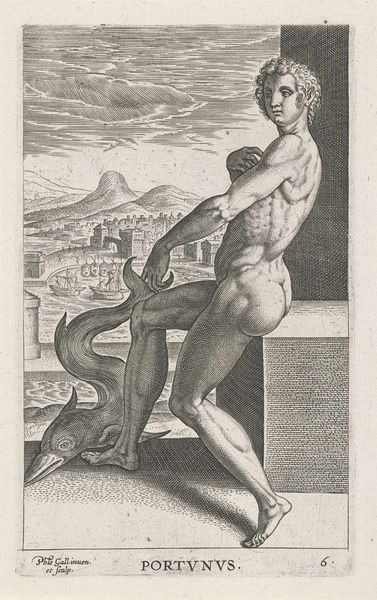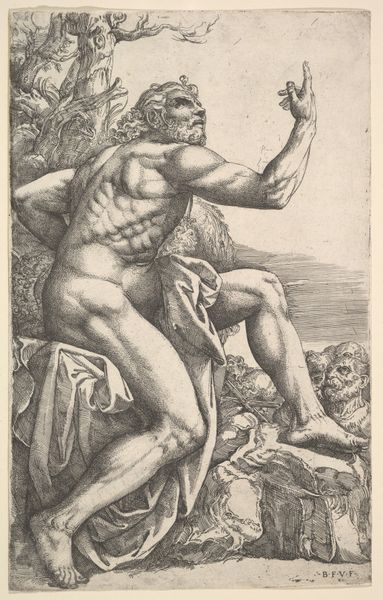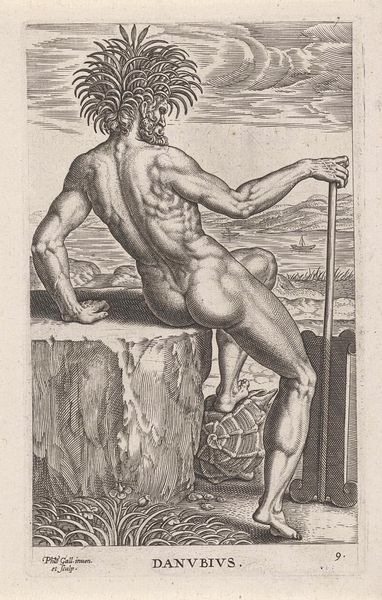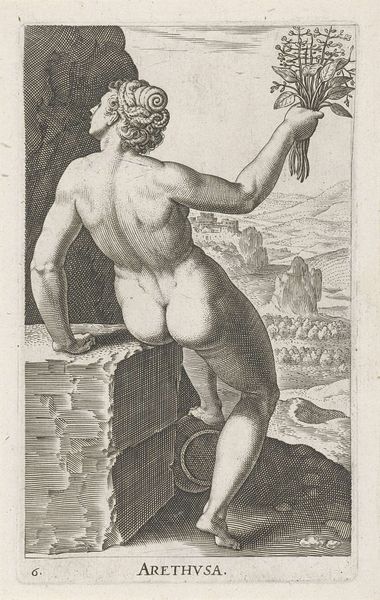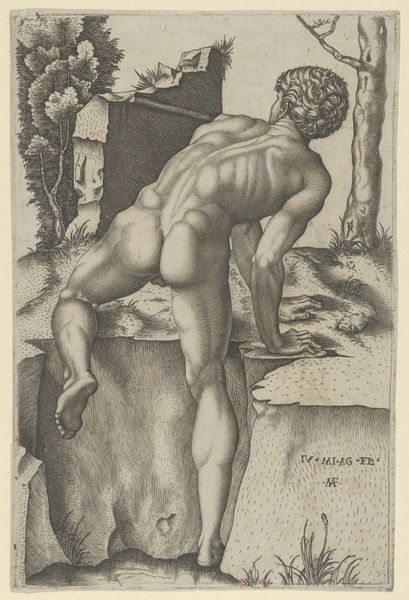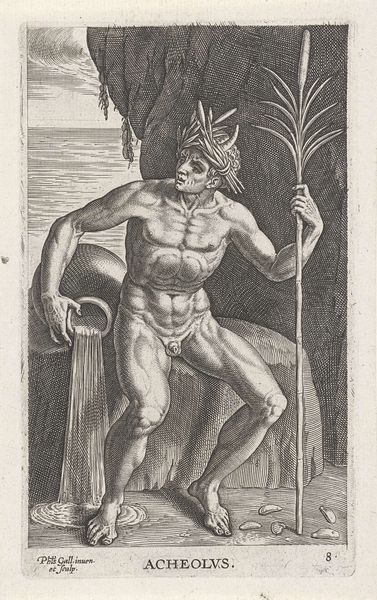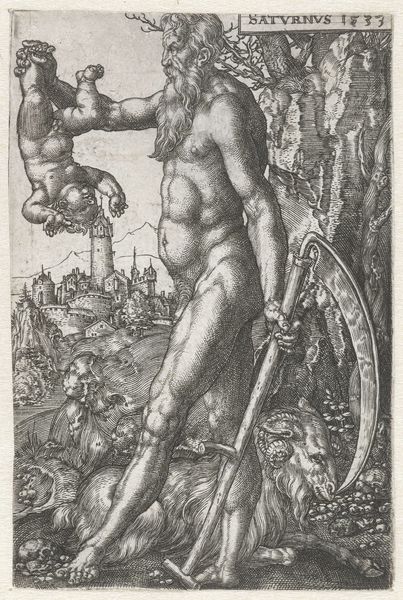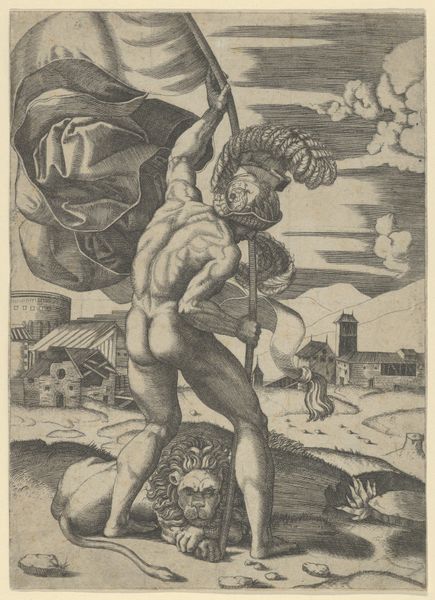
Dimensions: height 165 mm, width 102 mm
Copyright: Rijks Museum: Open Domain
Editor: This is "Riviergod Tibris" or "River God Tiber," an engraving by Philips Galle from 1586. It has this very strong figure turned away from us, but gazing back at the city. What symbolic weight do you see here? Curator: The Tiber, as a river god, represents the lifeblood and foundation of Rome itself. His averted gaze and powerful musculature? This encapsulates the symbolic ideal of Rome—enduring strength turning towards its origins and future. Editor: I hadn’t thought about him gazing at the city as a symbolic choice. Is the cornucopia held by the other figure related? Curator: Absolutely! The cornucopia overflowing with fruit symbolizes abundance and prosperity, stemming from the river’s resources. Its presence is a potent visual reminder of the reciprocal relationship between the river and its people. Think of how often rivers symbolize fertility and renewal. Editor: So the river gives life to the city and it provides resources to thrive? What about the shell at the lower left of the print? Is it a sign of the river’s bounty as well? Curator: Perhaps, but consider, too, that the shell has long symbolized pilgrimage, movement, and change. Its presence subtly underscores the Tiber’s journey and Rome’s ongoing transformation. Even the nude male form holds symbolic weight, connecting to classical ideals and cultural memory, the potency and idealized vision of mankind. Editor: So everything here, from the god's gaze to the fruit, tells a story beyond just a river. I’ll never look at a classical image the same way again. Curator: Precisely! Recognizing how such visual motifs have permeated culture for centuries shows the potent role of imagery.
Comments
No comments
Be the first to comment and join the conversation on the ultimate creative platform.
